
Fans of the 1998 remake of the movie The Parent Trap with Dennis Quaid and Lindsay Lohan probably remember this signature line: “Meredith, do you want the 411, the information, the lowdown on the other women in my dad’s life?” The 411 is important for us all, whether it’s for dating insights or for garden maintenance—such as insects that feed on trees and shrubs, one of which is webworms. When you see a nest of these caterpillars on a leafy woody plant for the first time, the “What in the world is that?” alarm is sure to go off.
What are they?
Webworms are caterpillars. There are many species, but all pretty much behave similarly. They tend to feed in large numbers, devouring leaves and making nests that vary in diameter from 6 inches to 3 feet. The nests often look a bit different from one another and are located in different places on a plant. Generally, the first symptoms of infestation are when beige to brown webs (hence the name) irregularly enclose the ends of lower branches or branch/trunk attachments. Initially, webworm caterpillars feed on the upper surfaces of leaves, but as they grow in size they eat most of the leaf surface. During the final stages of development, they depart the web and crawl to a convenient hiding place such as fallen leaf litter under the canopy or under bark scales on the trunk, where they create a pupal case and enter their next life stage.
How to manage these pervasive pests
The good news is that common webworms that feed on deciduous trees are “season specific,” which means they are present for the current growing season only. Pests that tend to be more life-threatening for woody plants infest or infect permanent plant parts such as branches, trunks, and roots. Of course, this doesn’t mean webworms aren’t to be taken seriously—just that there are certainly more impactful and life-threatening woody plant problems, including borers, cankers, and wilts. The key to managing webworms is being alert to their possible presence in the landscape and then being ready to intervene to protect your high-value landscape plants. Intervention could be as simple as using a broom to transfer them from the tree or shrub to the trash. Alternatively, you could apply an organic insecticide such as Bt, insecticidal soap, or Spinosad, or a synthetic insecticide such as permethrin, being sure to read and follow all label directions. Make notes in your garden diary (and include a few photos) about their timing and which plants they fed upon, and remind yourself to take mitigation steps as early as possible.
Fall webworm

Scientific name: Hyphantria cunea
Appearance: Pale yellow body with two rows of black spots when young; about 1 inch long with a black stripe down the length of the body when mature
When they feed: Midsummer to early fall
Nest location: Web tent on branch tips
Favorite host plants: Over 100 plants, including mulberries (Morus spp.), cherries (Prunus spp.), birches (Betula spp.), hickories and pecans (Carya spp.), walnuts (Juglans nigra), crabapples and apples (Malus spp.), and sweetgums (Liquidambar styraciflua)
Control considerations: If feeding is extensive or the tree or shrub is small, physically remove the caterpillars with a broom or strong stream of water from a garden hose. If feeding is extensive on larger specimens of high importance, you can apply an organic insecticide; however, penetrating the web mass is difficult. In most situations, physical removal or simply allowing feeding to occur with the understanding that it won’t cause permanent harm is the best approach.
Forest tent caterpillar
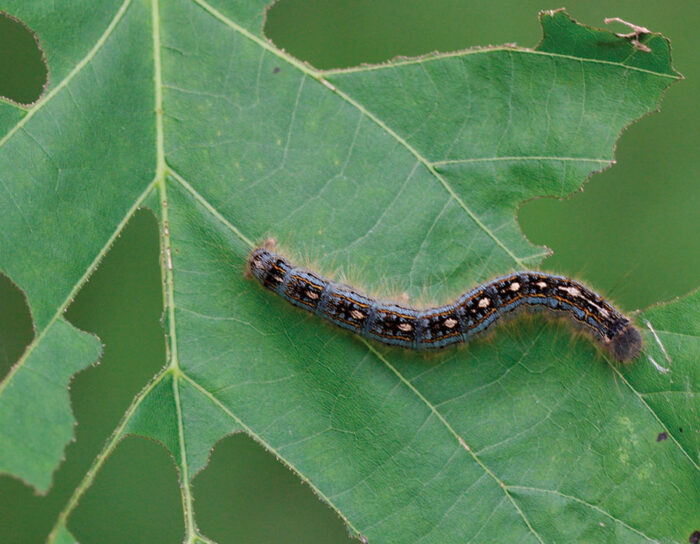
Scientific name: Malacosoma disstria
Appearance: Colorful and quite attractive blue- and black-striped body with a row of white oval-shaped spots down the back; up to 2½ inches long when mature
When they feed: Midspring to early summer
Nest location: Web mat on trunks and large branches
Favorite host plants: Aspens and poplars (Populus spp.), oaks (Quercus spp.), ashes (Fraxinus spp.), lindens (Tilia spp.), alders (Alnus spp.), birches, and most fruit trees
Control considerations: Same as for fall webworms. Several years of feeding can be tolerated by healthy trees. Finding these caterpillars in the landscape offers a great chance to teach youngsters about nature.
Eastern tent caterpillar
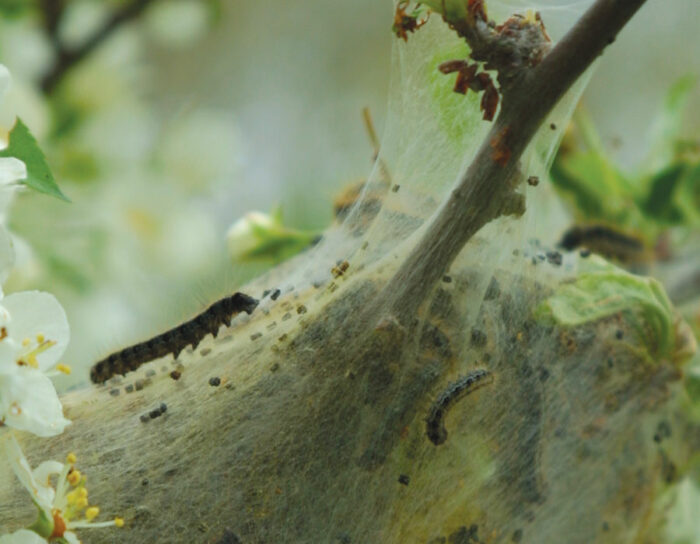
Scientific name: Malacosoma americanum
Appearance: Black body with a white stripe bordered by a reddish-brown area extending down the middle of the back and a row of oval blue spots and broken reddish-brown and yellow lines along each side of the body; approximately 2 inches long when mature
When they feed: Midspring to early summer
Nest location: Web tent at branch forks
Favorite host plants: Plums (Prunus domestica), chokecherries (Prunus virginiana), cherries, and apples
Control considerations: Same as for fall webworms. Generally, their feeding damage is only cosmetic in nature. Healthy, well-established plants can usually withstand a season or two of tent caterpillar feeding.
Mimosa webworm
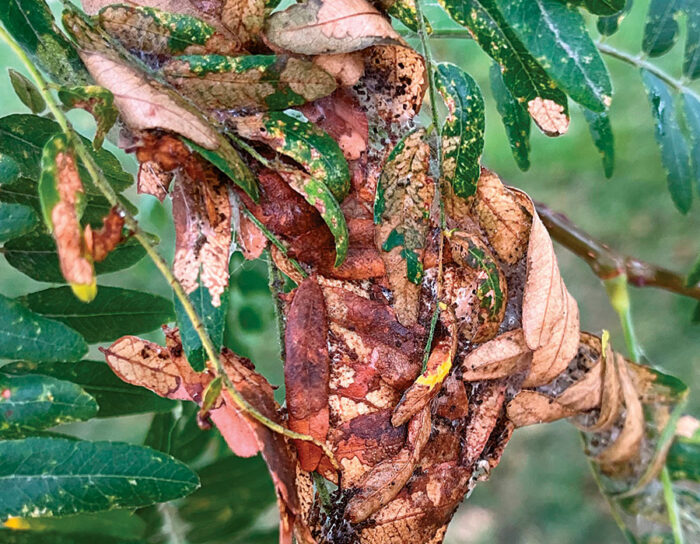
Scientific name: Homadaula anisocentra
Appearance: Grayish to dark brown with five white stripes running the length of the body; ½ inch long when mature
When they feed: Early summer for the first generation; in most locations a second generation follows in late summer
Nest location: Branches throughout the tree canopy
Favorite host plants: Mimosa (Albizia julibrissin) and honeylocust (Gleditsia triacanthos)
Control considerations: Same as for fall webworms. If justified and to be effective, treatments must reach feeding caterpillars when they are small and before webbing is apparent and foliage has turned brown. Some honeylocust cultivars are more susceptible to damage than others.
John C. Fech is an extension educator and horticulturist with the University of Nebraska and a certified arborist with the International Society of Arboriculture.

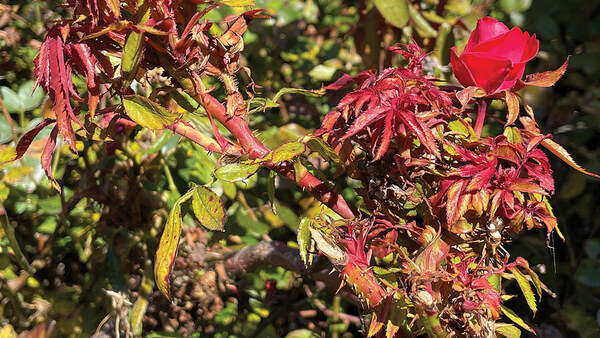

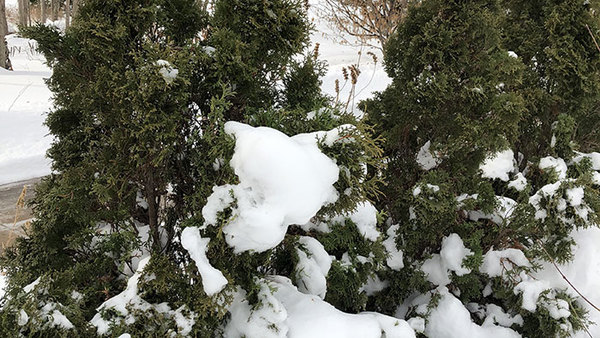













Comments
Log in or create an account to post a comment.
Sign up Log in